Celtic coin designs were influenced by trade with and the supply of mercenaries to the Greeks, and initially copied Greek designs, especially Macedonian coins from the time of Philip II of Macedon and his son, Alexander the Great.
In addition to gold and silver coins, the Celts on the continent and in southern Britain also produced potin coins using various combinations of copper and tin. These were small in size and were cast, not struck or hammered as were the dearer gold and silver coins.
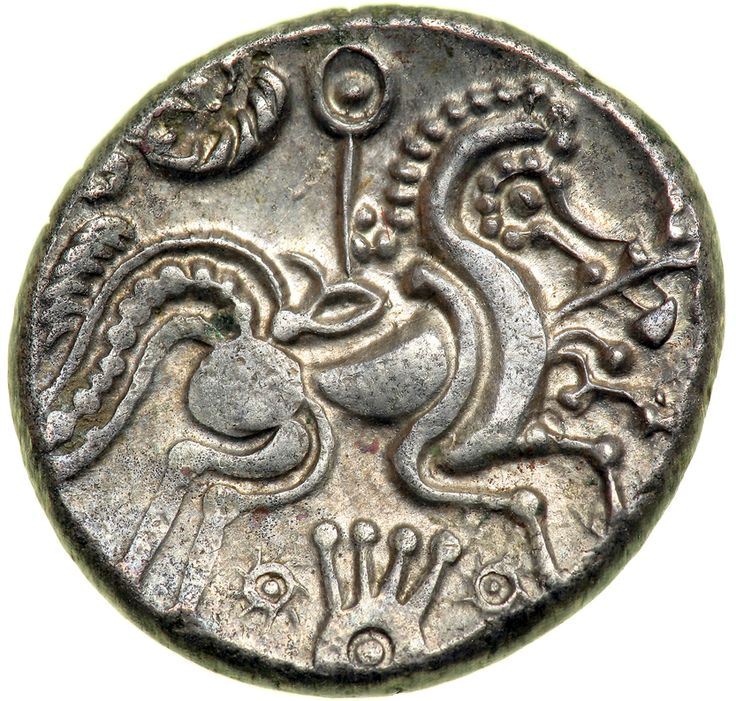
.jpg)
Reverse:
Die Orientation: -
Weight: 1.9 g
(19).jpg)
Reverse: Disjointed horse left, with rectangular head, body of crescents, four vertical legs, three roughly horizontal lines for tail; pellet below; twelve pellets above
Die Orientation: 0 H
Weight: 2.99 g
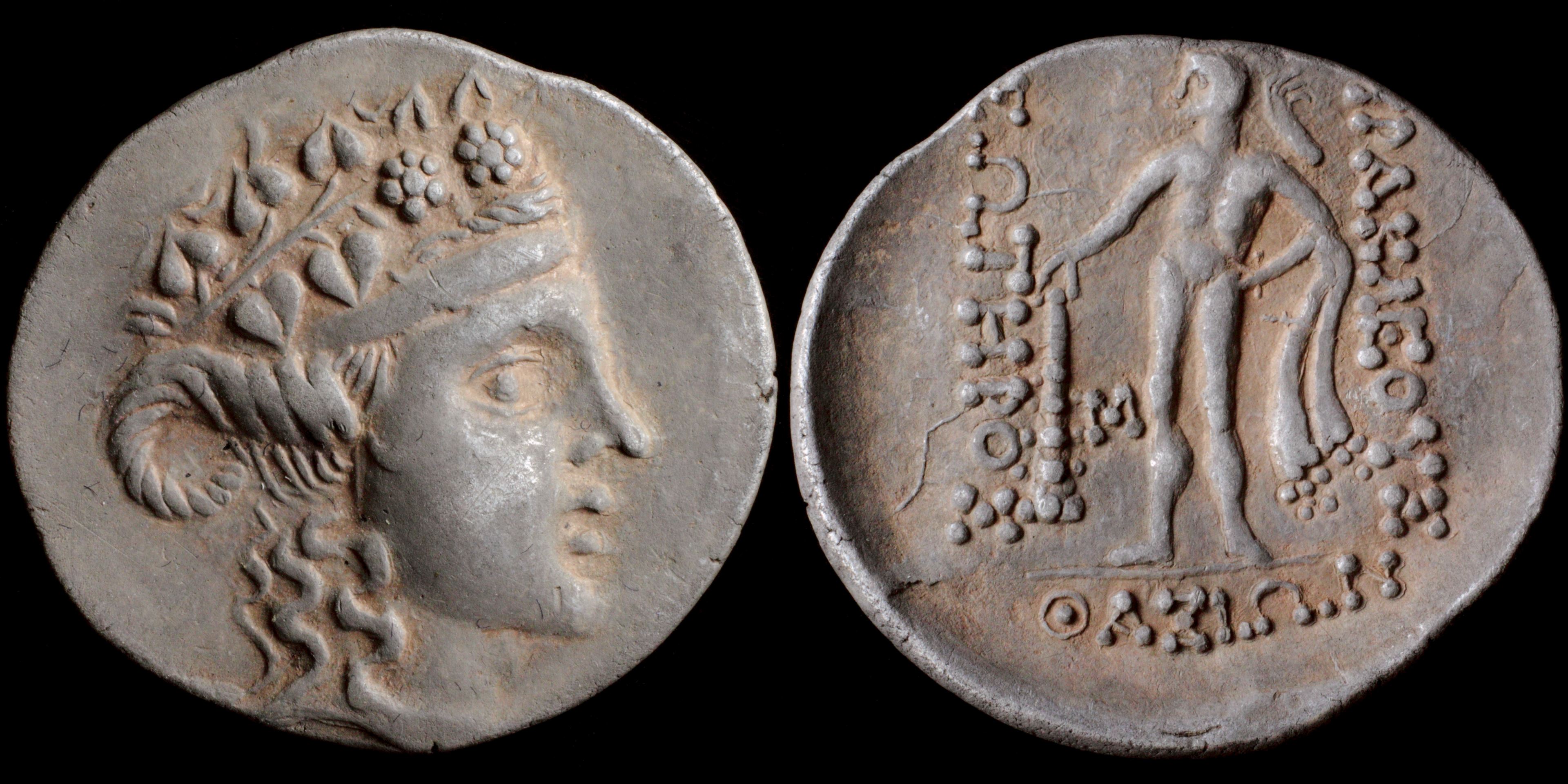
Reverse: nude Heracles left holding club, lion skin over shoulder; HPAKΛEOYΣ / ΣΩTHPOΣ, M / ΘAΣIΩN
Die Orientation: -
Weight: 16.14 g
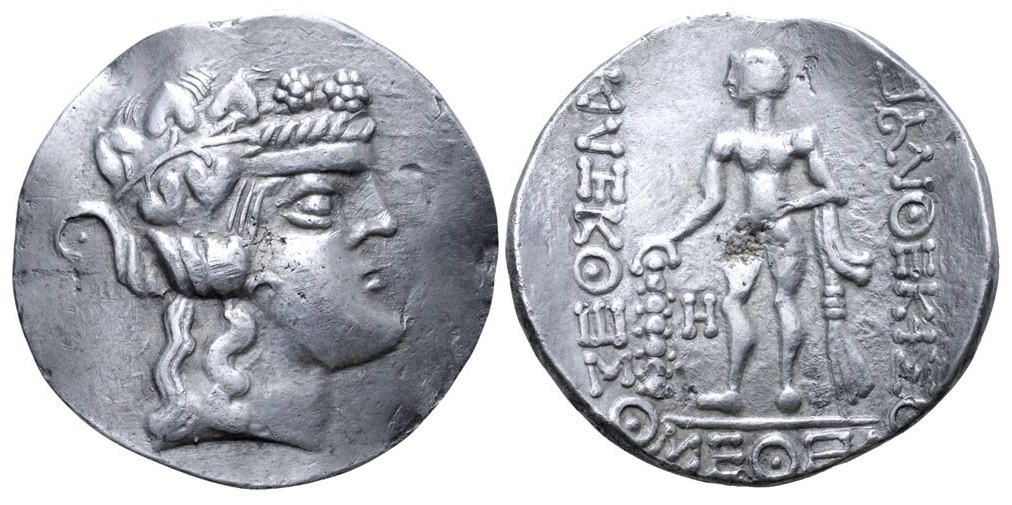
Reverse: Stylized Herakles standing facing, head left, holding club, with lion skin draped over arm; H in inner right field
Die Orientation: 12 H
Weight: 16.07 g
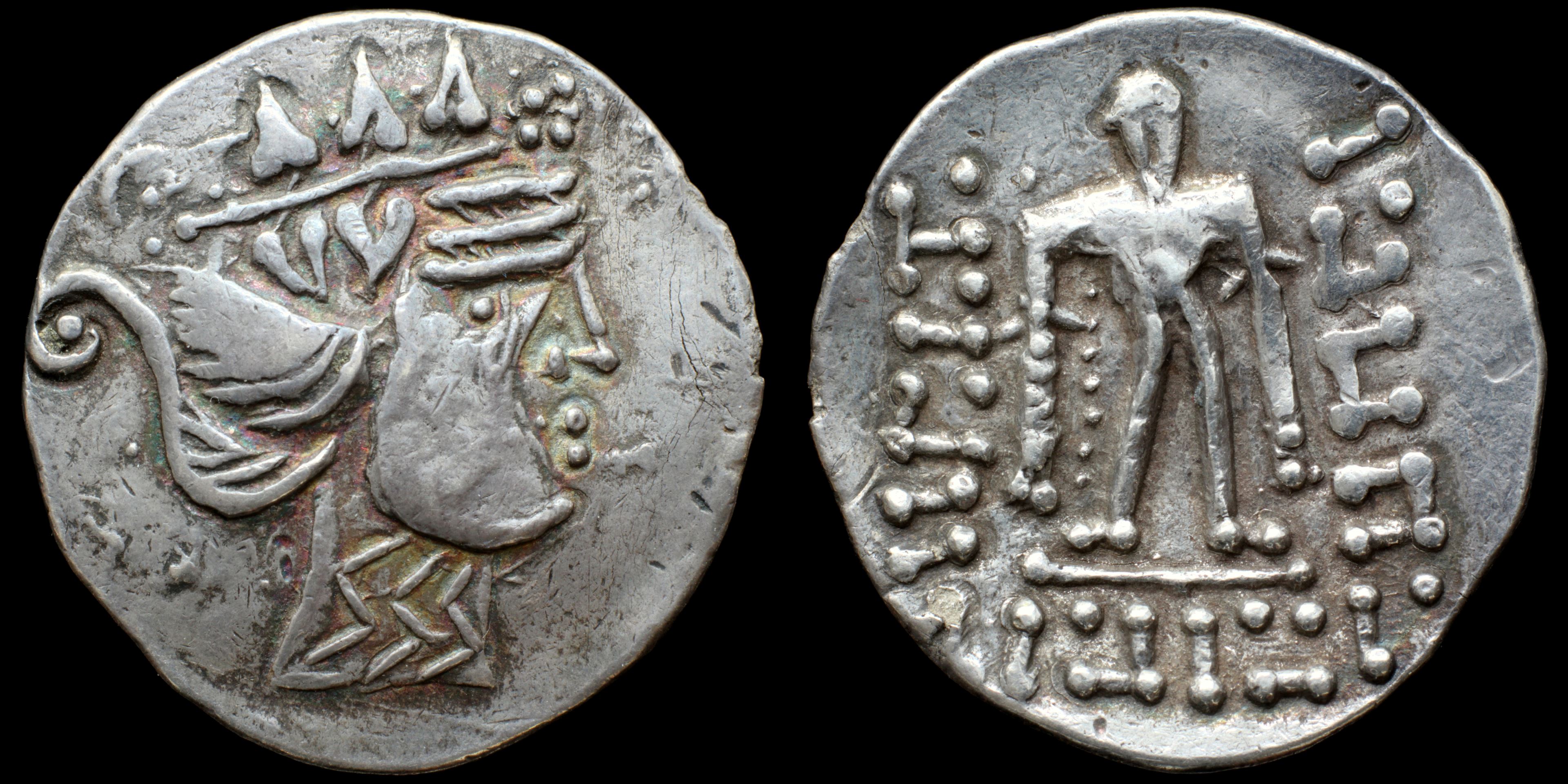
Reverse: nude Heracles facing holding club, lion skin over shoulder illegible lugend (HPAKΛEOYΣ / ΣΩTHPOΣ / ΘAΣIΩN)
Die Orientation: -
Weight: 16.3 g
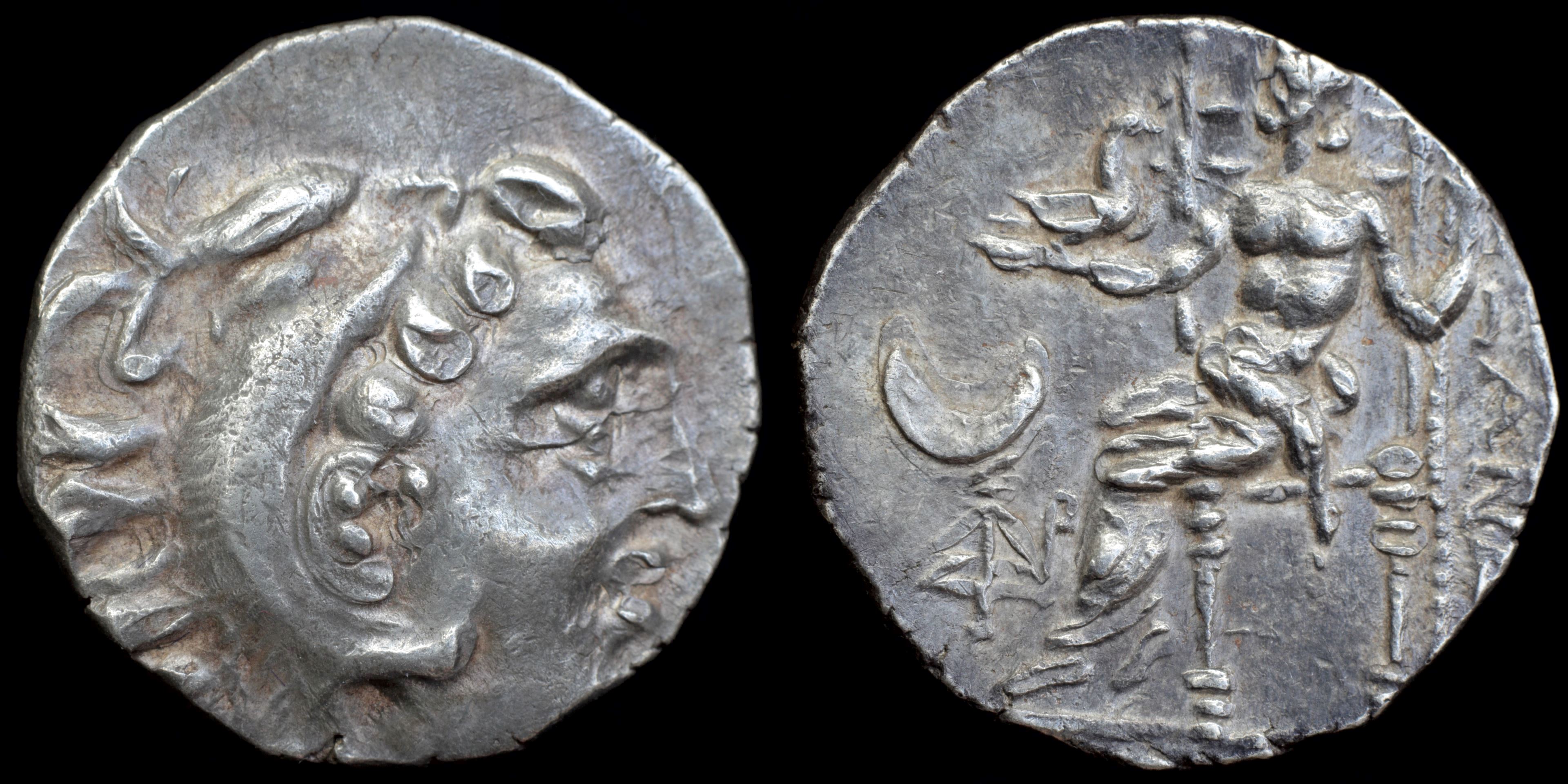
Reverse: Zeus seated left, leaning on scepter, holding eagle (goose)?; crescent left, AΛEΞANΔPOY (ΔIP) ?
Die Orientation: -
Weight: 7.7 g
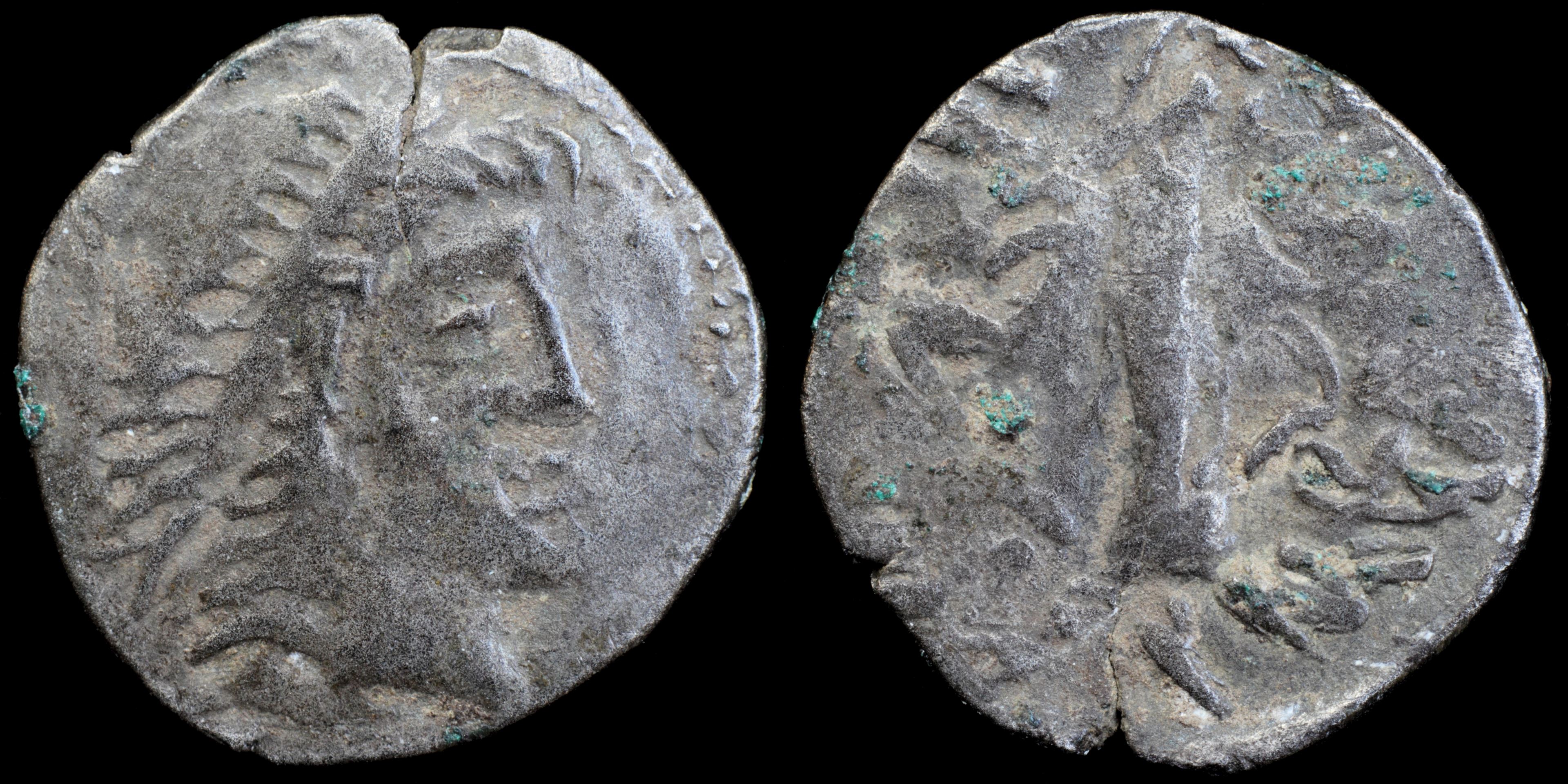
Reverse: cornucopiae IMBA?
Die Orientation: -
Weight: 1.2 g
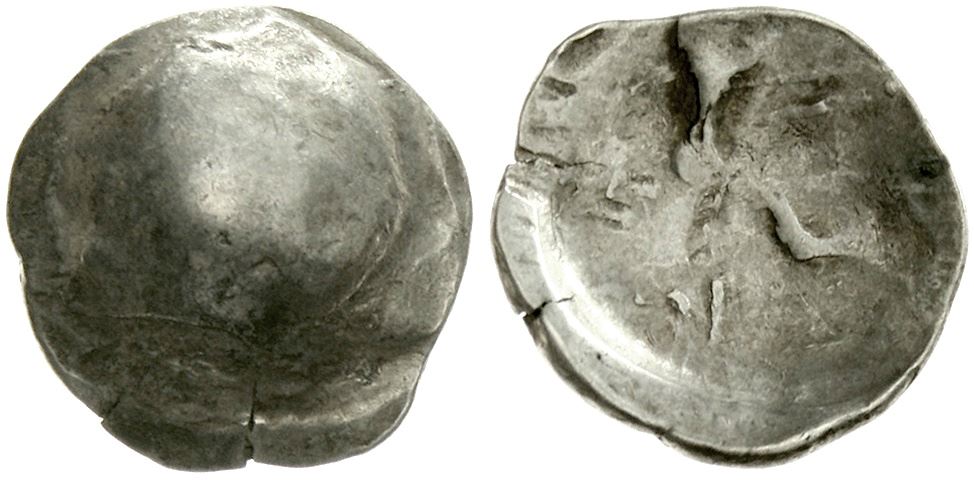
Reverse:
Die Orientation: -
Weight: 15.26 g

Reverse:
Die Orientation: -
Weight: 1.9 g
(18).jpg)
Reverse: Stylised horse prancing right, with grain ear mane; [pelletal sun above], reversed S before, pellet triad, line of three pellets and [obscured monogram] below
Die Orientation: 9 H
Weight: 1.24 g
Before the Romans arrived Britain was shared by several Celtic tribes; the Iceni being centred on the Norfolk area (but also occupying surrounding parts of Suffolk and Cambridgeshire). The Iceni are probably best known as the tribe that, united with the Trinovantes (from the area north east of London), ran riot over Roman rule under their warrior queen Boudicca. This coin, whose Celtic name has never been discovered, is simply referred to as a ‘silver unit’. It is tiny at just 14mm diameter and weighing in at 1.24g. All of these coins weighed the same (1.25g); a standard which was maintained for over 100 years to an extremely small tolerance, an amazing techical achievement for the time. As with all Celtic coinage the design is somewhat abstract. On the obverse is an ornate pattern, resembling 2 C’s back to back across an ornate belt, with patterns around. This has been progressively derived from the hair & laurel head band of Apollo on Greek coins, whose face has since disappeared. The reverse shows a horse galloping towards the right, a dotted wheel above it’s back, and various dots around. The charioteer has disappeared, and what remains of the chariot is the wheel floating above. Some of the dots and symbols are not mere random decoration but part of a series of coded control marks, probably denoting the issuing mint and moneyer. The coins were struck on concave blanks which were only about two-thirds of the size of the dies, so the entire design is never seen on one specimen.
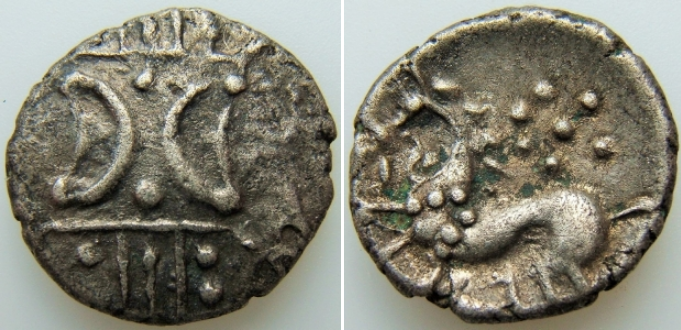
Reverse: Celticised horse left, 6 pellets on shoulder, floral pellets Sun above, ECEN (retrograde) below.
Die Orientation: 12 H
Weight: 1.09 g
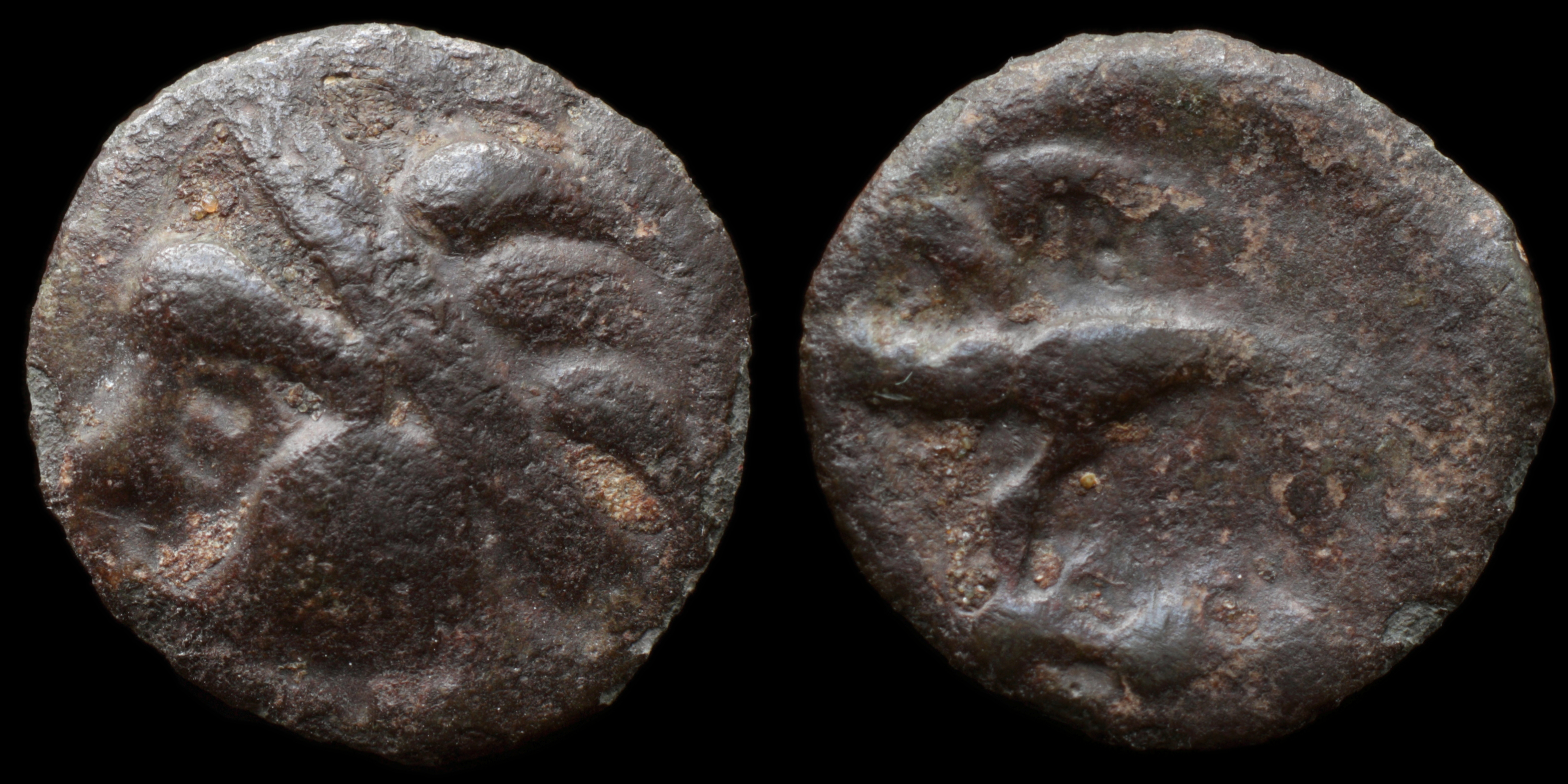
Reverse: boar left; two circles below
Die Orientation: -
Weight: 2.4 g
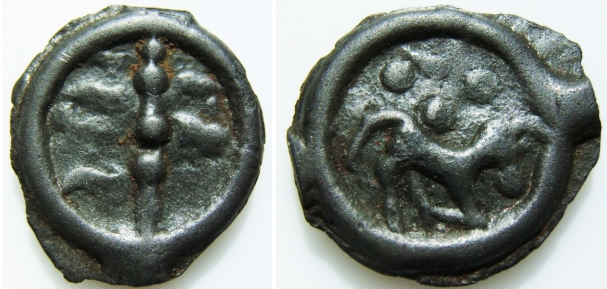
Reverse: Horse right with three pellets and crescent above.
Die Orientation: 4 H
Weight: 4.03 g
Added onto the Wildwinds site.
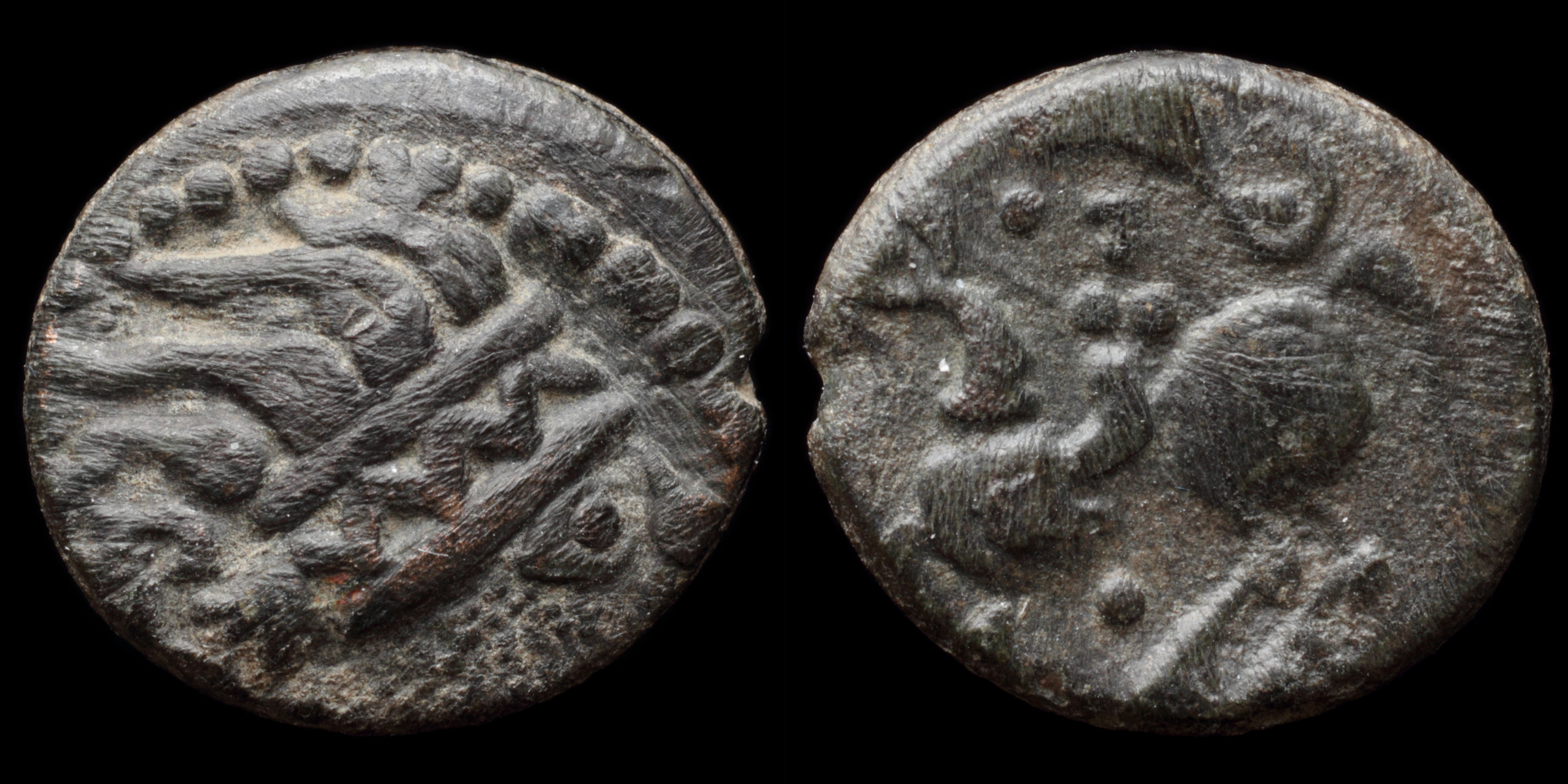
Reverse: stylized horserider prancing left
Die Orientation: -
Weight: 2.6 g
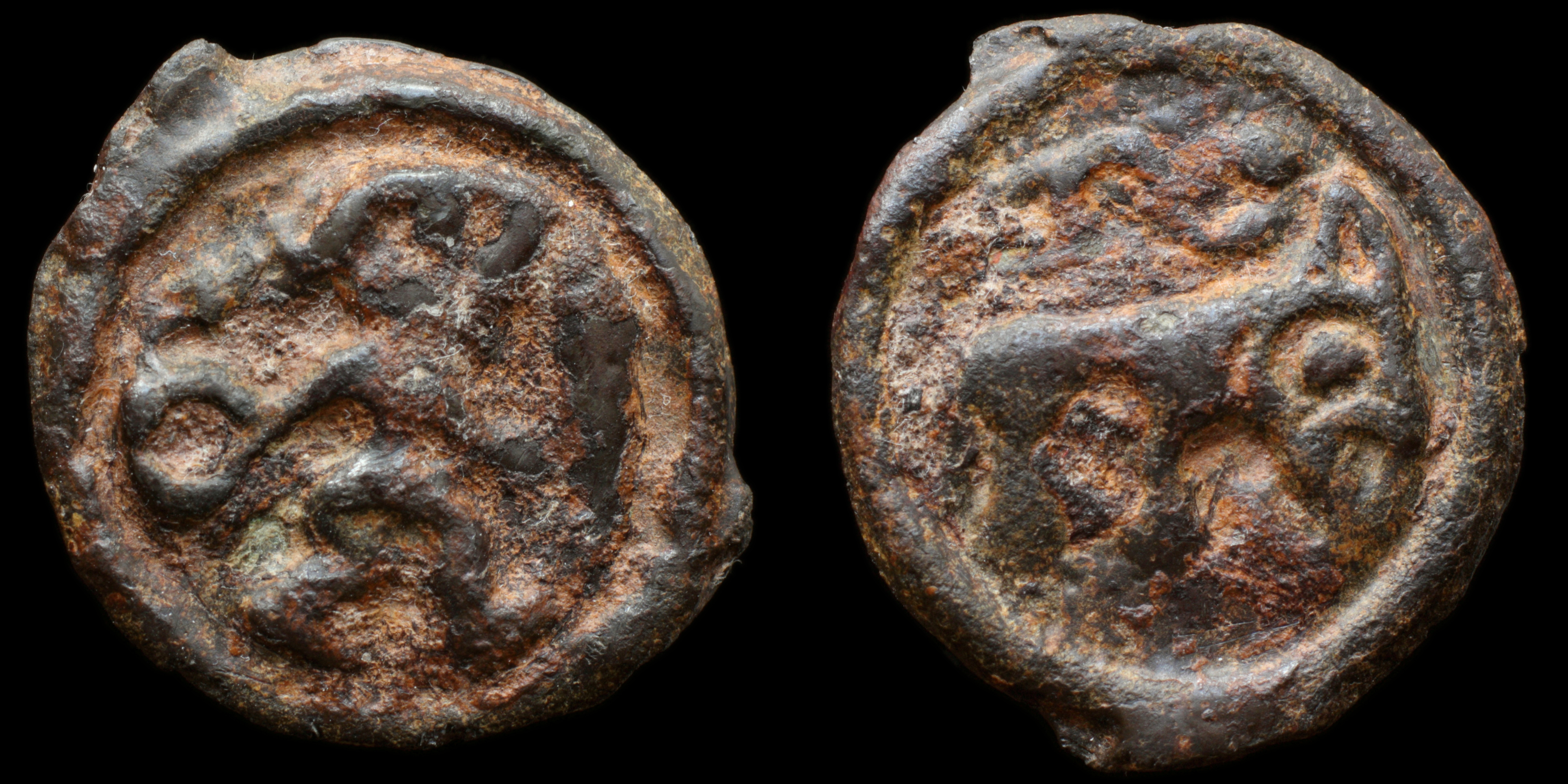
Reverse: bear right attacking snake right
Die Orientation: -
Weight: 4.7 g
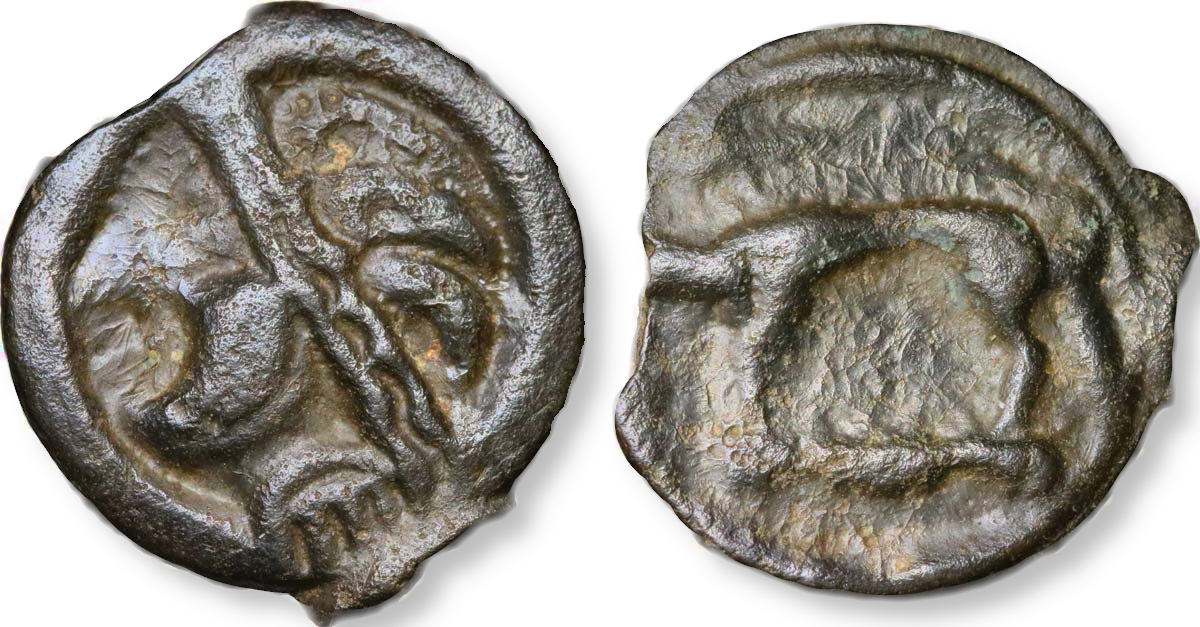
Reverse:
Die Orientation: -
Weight: 3 g
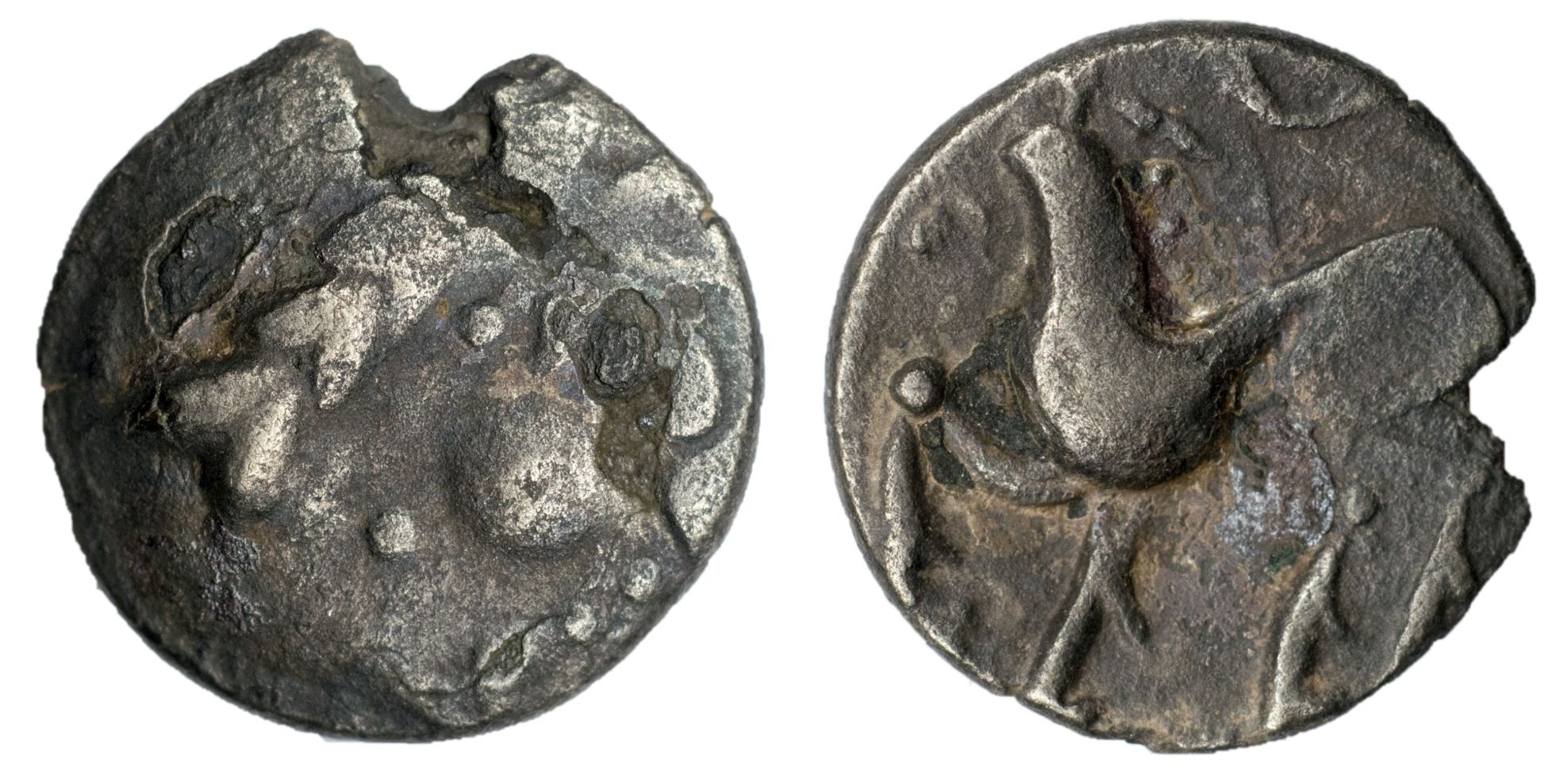
Reverse: Horse to the left, circle above (mostly off flan)
Die Orientation: 0 H
Weight: 1.4 g
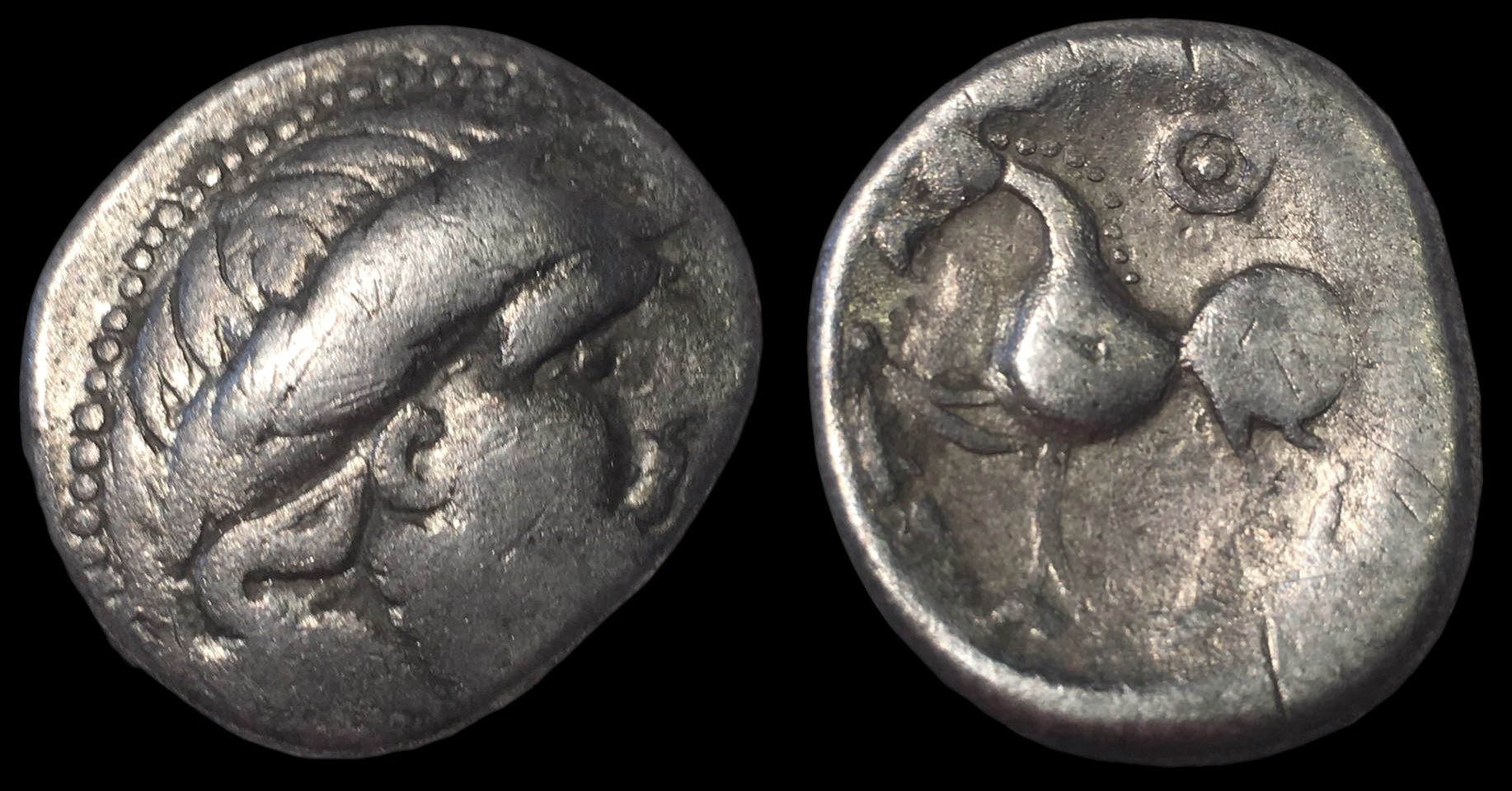
Reverse:
Die Orientation: 0 H
Weight: 0 g
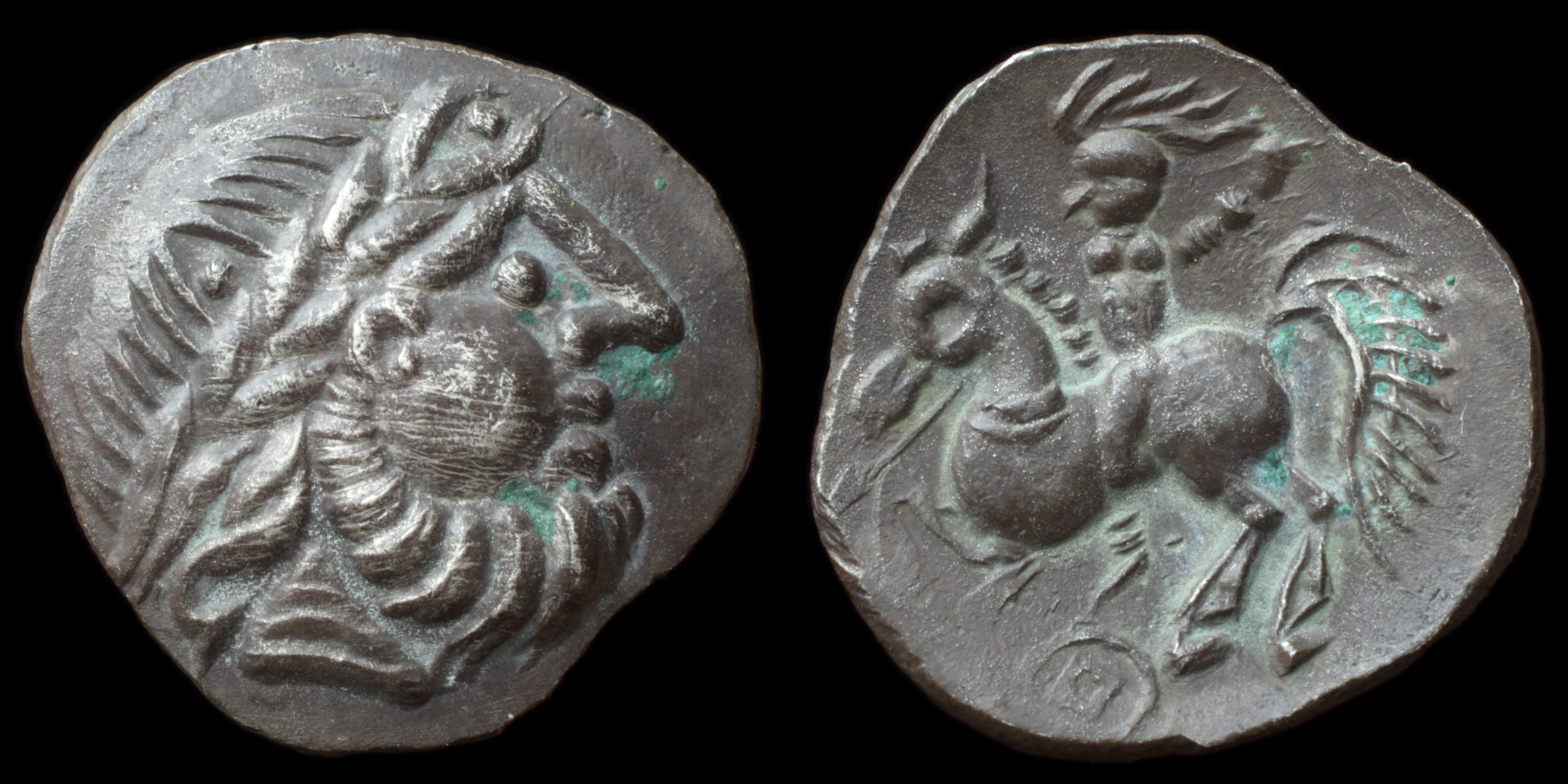
Reverse: horserider left
Die Orientation: -
Weight: 2.5 g
.jpg)
Reverse: horseman with spear riding right; SEKoBiRIKeS
Die Orientation: -
Weight: 2.4 g
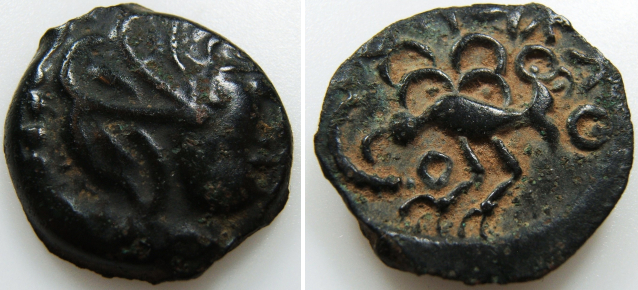
Reverse: [K]OIIAKA - Bird left, annulet before, two annulets containing pellets behind.
Die Orientation: 11 H
Weight: 2.76 g
Added onto the Wildwinds site.
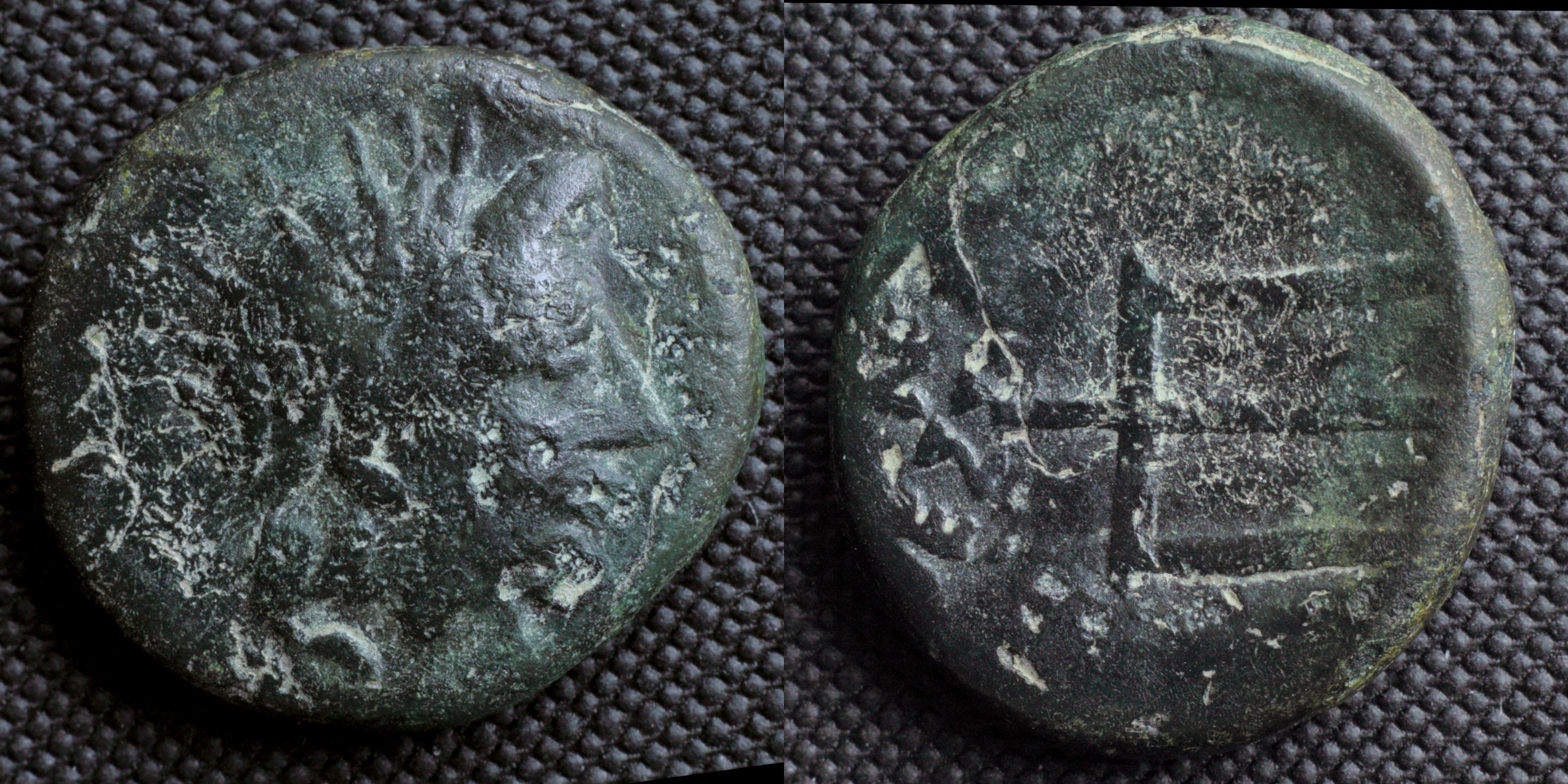
Reverse: Wide trident
Die Orientation: -
Weight: 8.37 g
Celtic imitation of Macedonian issue from 185-168 BC. Overstrike of Thessalonica, 187-31 BC, head of Dionysos with ivy wreath right, goat standing right, ΘEΣΣA_ΛO / N_IK_HΣ, (NE) / ? other monograms, Sear #1466; BMC Macedonia p. 110, 10 - 16. Head of goat and one ivy-leaf under Strymon's head are slightly visible. Imitations from Serdi region weren't used to fool Macedonian traders but as their own currency. This coin is one of overstrikes on official Macedonian coins which prooves this theory.
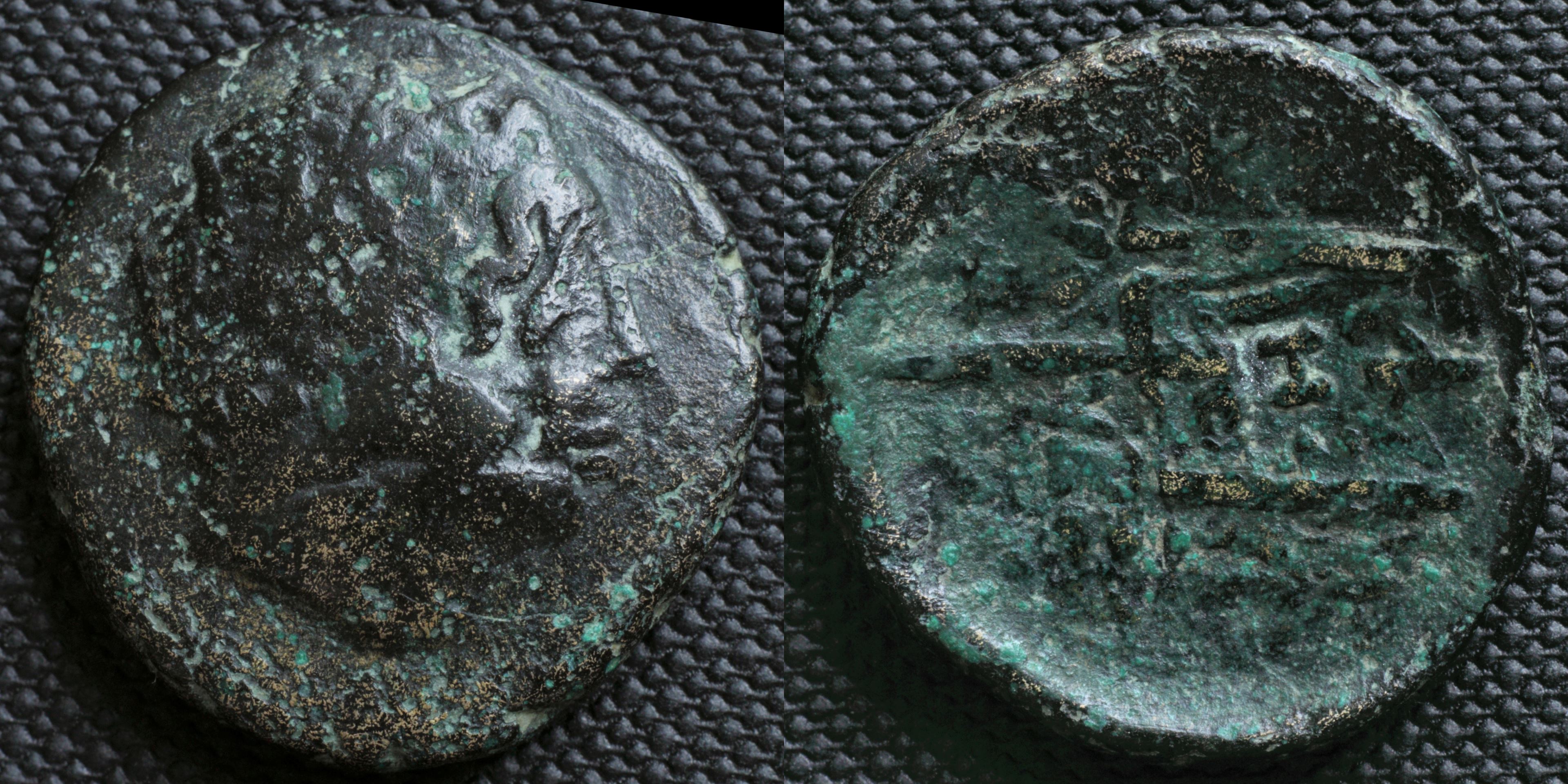
Reverse: Wide trident; MAKE / ?ΔONΩN?
Die Orientation: -
Weight: 6.7 g
Celtic imitation of Macedonian issue from 185-168 BC. Overstrike of Thessalonica, 158-31 BC, head of Dionysos with ivy wreath right, goat standing right, ΘEΣΣA_ΛO / N_IK_HΣ, (NE) / ? other monograms, Sear #1466; BMC Macedonia p. 110, 10 - 16. Wave on Strymon's face is relic of original coin also there is slightly visible inscription (perpendicular to trident). Imitations from Serdi region weren't used to fool Macedonian traders but as their own currency. This coin is one of overstrikes on official Macedonian coins which prooves this theory.
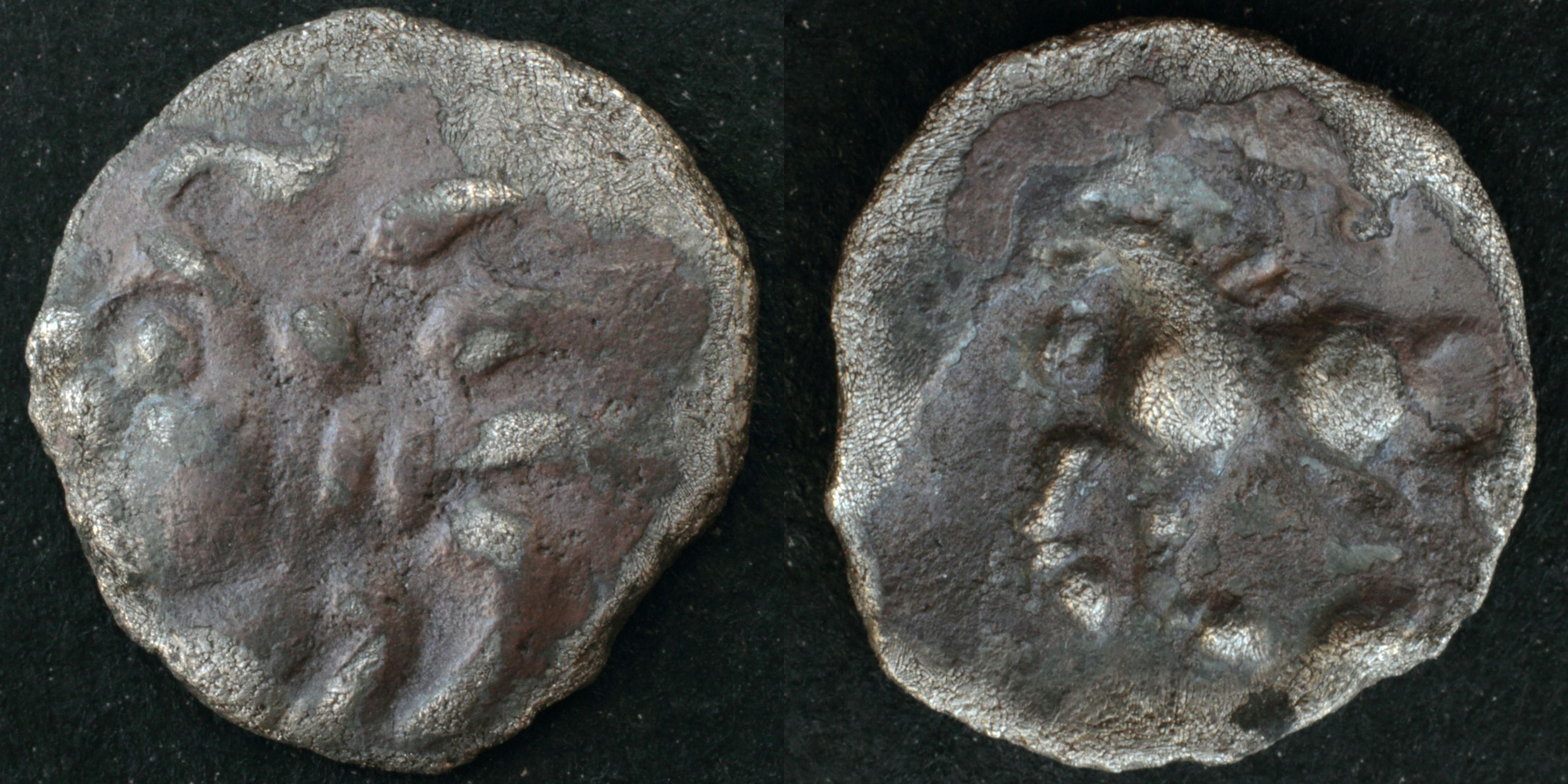
Reverse: horse left; pellet above
Die Orientation: -
Weight: 1.74 g
Vindelici lived in the area of today's Switzerland, southern Germany and western Austria.
